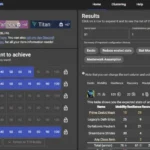In today’s rapidly evolving e-commerce landscape, small businesses often find themselves in a constant struggle to compete with larger, more established online retailers. The key to their success often lies in efficient order fulfillment, and this is where e-commerce fulfillment services and ecommerce fulfilment centres come into play. This comprehensive guide explores these essential components, providing small businesses with a roadmap to streamline their operations and thrive in the world of online retail.
Chapter 1: Understanding E-commerce Fulfillment Services
1.1 What are E-commerce Fulfillment Services?
E-commerce fulfillment services are third-party providers that specialize in handling various aspects of order fulfillment for online retailers. They take on responsibilities such as warehousing, inventory management, picking, packing, and shipping. Small businesses can leverage these services to reduce their operational burdens and focus on core business activities.
1.2 The Role of E-commerce Fulfillment in Small Businesses
Discover the critical role e-commerce fulfillment plays in the success of small businesses. It helps in cost reduction, scalability, and the ability to meet customer demand more efficiently.
Chapter 2: Types of E-commerce Fulfillment Services
2.1 Third-Party Fulfillment Providers
Learn about the different third-party fulfillment providers available to small businesses, from major logistics companies to specialized e-commerce fulfillment services.
2.2 Self-Fulfillment vs. Outsourcing
Explore the pros and cons of self-fulfillment (in-house operations) versus outsourcing to third-party providers to help small businesses make an informed decision.
Chapter 3: Choosing the Right E-commerce Fulfillment Center
3.1 E-commerce Fulfillment Center Defined
Understand what an e-commerce fulfillment center is and how it plays a pivotal role in the fulfillment process. These centers are strategically located to optimize shipping and delivery efficiency.
Chapter 4: Essential Features of E-commerce Fulfillment Centers
4.1 Inventory Management
Efficient inventory management is crucial for the smooth operation of a fulfillment center. Learn how it impacts order fulfillment and customer satisfaction.
4.2 Technology and Integration
Explore the technological advancements and integration strategies used in modern fulfillment centers to enhance efficiency and accuracy.
Chapter 5: How to Evaluate and Select the Right Fulfillment Solution
5.1 Identifying Your Business Needs
Small businesses can determine their unique requirements by assessing their order volume, product types, and customer expectations.
5.2 Key Considerations
Examine important factors such as shipping costs, order processing times, customer service levels, and scalability when evaluating and selecting a fulfillment solution.
Chapter 6: The Implementation Process
6.1 Transitioning to a Fulfillment Solution
Discover the steps involved in transitioning from self-fulfillment to outsourcing to a third-party provider or a fulfillment center. The transition process requires careful planning and coordination.
Chapter 7: Measuring Success and Continuous Improvement
7.1 Key Performance Indicators (KPIs)
Explore the essential KPIs that small businesses should track to gauge the success of their chosen fulfillment solution.
7.2 Adapting to Market Changes
Understand how small businesses can adapt their fulfillment strategies to stay competitive in an ever-changing e-commerce market.
Conclusion
Embracing ecommerce fulfilment services and ecommerce fulfillment center can be a game-changer for small businesses looking to gain a competitive edge in the world of online retail. By understanding the options available, evaluating their specific needs, and making informed decisions, small businesses can streamline their operations, reduce costs, and provide an exceptional shopping experience for their customers. This guide serves as a valuable resource to help small businesses achieve growth and success in the e-commerce marketplace.




